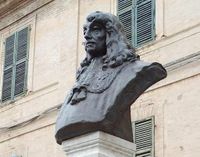With the arrival of September, Italy’s art scene is abuzz with two major exhibitions that bridge centuries of creative exploration. In Monza, the celebrated polymath Ugo La Pietra returns to the city where he once taught, unveiling a deeply personal show at the Musei Civici. Meanwhile, in Camerano, the legacy of Baroque master Carlo Maratti is being re-examined through the lens of engraving in a show that has already drawn thousands of visitors and is set to travel onward. Together, these exhibitions offer a vibrant reflection on the enduring dialogue between artist, medium, and audience.
At the heart of Monza, the exhibition “Il Giardino delle delizie” opened its doors on September 7, 2025, at the Musei Civici di Monza, casting a spotlight on the multifaceted career of Ugo La Pietra. Known as an architect, designer, artist, filmmaker, musician, and cartoonist, La Pietra’s creative reach has spanned over sixty years, delving into the evolving relationship between individuals and their environments. The current show, curated by Simona Bartolena and Simona Cesana in collaboration with LeoGalleries and the Archivio Ugo La Pietra, features about fifty works—ranging from intricate drawings to bold acrylics on canvas, as well as ceramics and tapestries. These pieces are closely tied to his recent book, also titled “Il giardino delle delizie,” which meditates on the garden as both a real and symbolic space, particularly its role as a haven for reflection within contemporary urban life.
For La Pietra, this exhibition is more than a showcase—it’s a homecoming. From 1976 to 1983, he taught at the Istituto d’Arte in Monza, a formative period that shaped both his practice and the school’s creative culture. “The relationship with the students was special. The school was an isolated place, not Milan, not the center of Monza, but an island of experimentation and risk, where personal paths were cultivated,” La Pietra recalled, according to Il Giorno. He fondly remembers a time before social media distractions, when students absorbed the deep artistic intent of their teachers. It was here that La Pietra began pioneering projects in environmental design—work that would later foreshadow developments in home automation and smart living spaces.
The exhibition also nods to Monza’s artistic legacy. Over the years, La Pietra has been active in the city, building on the tradition of the historic Biennale di Arti Decorative by organizing exhibitions, conferences, and design awards, often in partnership with the gallery Fatto ad Arte. Yet, he notes with a hint of frustration that his efforts to revive Monza’s once-prominent role in the applied arts have not always found receptive ears among local administrators. “I have tried several times to engage with Monza’s administrators to make them understand that, by reviving the forgotten experience of the Biennale—born in Monza and then effectively dead—the city could carve out a very important role in the field of applied arts and artistic craftsmanship, as a valid alternative to Milan. Unfortunately, I have not had any feedback, but it would still be a very current issue today,” La Pietra observed, as reported by Il Giorno.
Accessibility stands as a core value for the Monza exhibition. The show is fully accessible to people with motor disabilities, and audio descriptions are available for select pieces to ensure that blind visitors can engage with the art. This commitment to inclusivity is paired with a series of parallel events, enriching the cultural offering throughout the exhibition period. Visitors can explore the show until November 2, 2025. Admission is included in the museum ticket, priced at 6 euros. Until September 30, the exhibition is open Wednesday to Sunday from 3 pm to 6 pm, with additional hours on Thursday evenings and weekend mornings. From October 1 through November 2, the schedule shifts slightly, maintaining accessibility for a wide audience.
While Monza celebrates contemporary creativity, Camerano is paying tribute to a master of the past. The exhibition “Carlo Maratti e l’incisione,” which opened on July 17, 2025, in the church of San Francesco, has already attracted more than 2,300 visitors in less than two months, according to Il Resto del Carlino. Curated by Simonetta Prosperi Valenti Rodinò and Stefano Papetti, the show remains open until September 14, before embarking on a tour to Ascoli Piceno and, ultimately, Rome. Its timing coincides with the 30th edition of the Festa del Rosso Conero, a festival that draws crowds to Maratti’s hometown and adds to the exhibition’s festive atmosphere.
The focus of the Camerano exhibition is Maratti’s innovative use of printmaking to disseminate his artistic language across Europe. As Prosperi Valenti Rodinò explained, “The aim of the exhibition is to reconstruct, with philological method, the role of engraving in Maratti’s artistic and cultural strategy.” For the first time, an extraordinary body of works—many rarely or never before seen—has been gathered to illuminate the complexity of an artist who was a central figure in Baroque Rome. Papetti added, “Maratti was able to combine the refinement of line with the strength of the message, entrusting prints with the task of making his work eternal and accessible. Engraving thus becomes a key to understanding the evolution of taste and patronage between the seventeenth and eighteenth centuries.”
Visitors to the Camerano exhibition can view the show daily from 10 am to 12 pm and from 4 pm to 7 pm until its closing date. The exhibition’s next stops in Ascoli Piceno and Rome promise to extend its impact, tracing Maratti’s artistic journey and his influence on European art beyond the confines of Baroque Rome.
Both exhibitions, though rooted in different eras and artistic languages, share a common thread: they highlight the enduring power of art to shape, reflect, and transcend its context. In Monza, La Pietra’s works invite viewers to reconsider the spaces they inhabit, offering the garden as a metaphor for sanctuary and contemplation. In Camerano, Maratti’s engravings serve as a testament to the artist’s ambition to reach audiences far and wide, using the reproducibility of print to ensure his vision endured across centuries and borders.
As Italy’s cultural calendar fills with these and other events, the resonance of past and present is felt in every brushstroke, line, and creative experiment. For those seeking inspiration—or simply a moment of reflection—these exhibitions offer a timely reminder of the richness and diversity of artistic expression.




